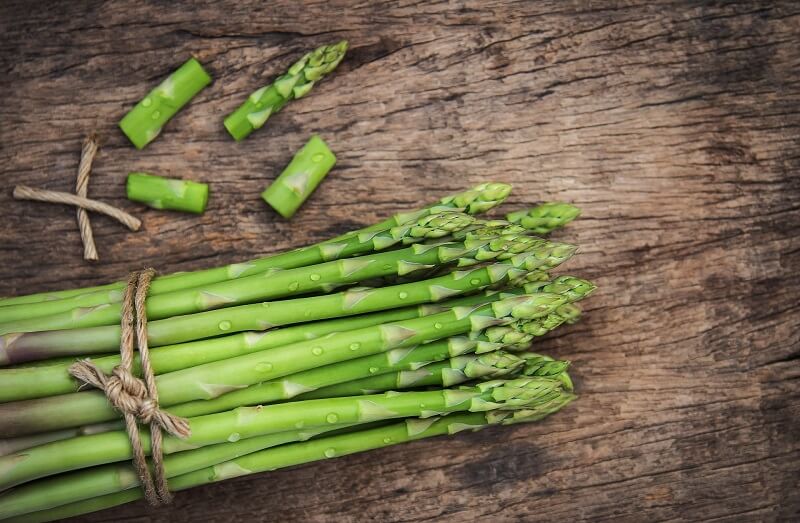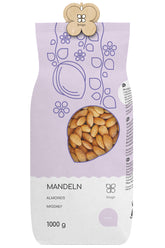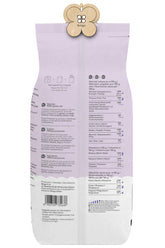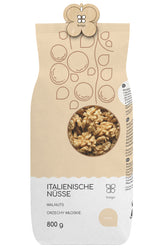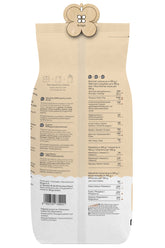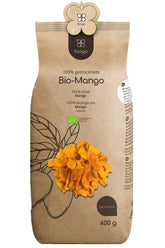Asparagus - healthy and delicious
- What do we know about asparagus?
- What properties does asparagus have?
- How do you cook asparagus?
- What do you do with asparagus?
Asparagus is a spring staple that's very popular in May. It's easily found in city bazaars and on store shelves. So let's explore its properties, what makes it special, and how it can be incorporated into our daily diet.
What do we know about asparagus ?
Asparagus (actually: Asparagus officinalis) is a vegetable that naturally occurs only in the Mediterranean region, but is available as a cultivated plant almost worldwide. Interestingly, most asparagus is not produced in Europe, but in Asia, more specifically in China. The edible part of the plant is the young shoots, often called asparagus leaves. Most of us know them in two colors: green and white. It's important to emphasize, however, that the color here doesn't refer to different plant species, but simply a different way of cultivation. Green asparagus grows above ground, while white asparagus is covered in soil. But regardless of the color, this vegetable has countless nutritional and health-promoting properties—so it's worth taking a closer look.
What properties does asparagus have?
Asparagus should be eaten by anyone who follows a low-calorie, yet nutrient-rich diet. This is because 100 grams of asparagus contains only 18 calories, and 95 percent of the entire vegetable is... water. Nevertheless, asparagus contains significant amounts of folic acid, vitamins C and E, beta-carotene, fiber, calcium, phosphorus, and potassium. As a result, it helps slow the aging process of the skin, maintains its firmness, elasticity, and proper regeneration, hydrates the body, strengthens bones, and has a positive effect on the immune and digestive systems.
How do you cook asparagus?
Before cooking asparagus, make sure you choose fresh, healthy specimens. How do you know? The asparagus should not be too thin, should not be discolored, and the ends should not be dry. If everything is in order, we need to peel the vegetables (white asparagus), starting below the head and working our way up. It is important to do this carefully and thoroughly. Then we cut off the dry end (in both cases) to ensure that no part of the plant becomes too hard. Next, add the peeled asparagus to the pot so that the heads are above the water surface (we can also tie them together to make them more compact and stable). Salt and sweeten the water a little. Cover and let it simmer over medium heat for 10 (green asparagus) to 15 (white asparagus) minutes.
What do you do with asparagus?
Asparagus pairs well with fried eggs , sausages, and meat, although it can be served in a variety of ways. Asparagus creams, pasta bakes, risottos, pancakes, and salads are all very popular. This vegetable also pairs well with salmon, tastes great grilled, and some people even prepare skewers based on it. It all depends on our ingenuity and what ingredients we have on hand.
So if you want to eat healthy and delicious food, asparagus is a good choice. It's one of those seasonal vegetables you should definitely keep in mind.
THE PUBLISHER'S CHOICE
Almonds 1 kg BIOGO
- £11.00
£13.00- £11.00
- Unit price
- / per
Walnuts 800 g BIOGO
- £8.00
£10.00- £8.00
- Unit price
- / per
Dried organic mango 400 g BIOGO
- £10.00
- £10.00
- Unit price
- / per
Dried White Mulberries 500 g ORGANIC
- £6.00
£7.00- £6.00
- Unit price
- / per
Dried organic figs 800 g BIOGO
- £27.00
- £27.00
- Unit price
- / per
Unpeeled buckwheat groats 1 kg BIOGO
- £3.00
£3.00- £3.00
- Unit price
- / per
Organic coconut flakes 500 g BIOGO
- £9.00
- £9.00
- Unit price
- / per
Organic oat flakes 600 g BIOGO
- £4.00
- £4.00
- Unit price
- / per
Organic cashew nuts 1 kg BIOGO
- £18.00
- £18.00
- Unit price
- / per
Milk thistle seeds 1 kg BIOGO
- £4.00
- £4.00
- Unit price
- / per




















































































































